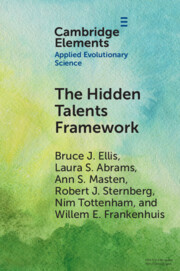Element contents
The Hidden Talents Framework
Published online by Cambridge University Press: 24 March 2023
Summary
Keywords
- Type
- Element
- Information
- Online ISBN: 9781009350051Publisher: Cambridge University PressPrint publication: 06 April 2023
References
- 10
- Cited by

